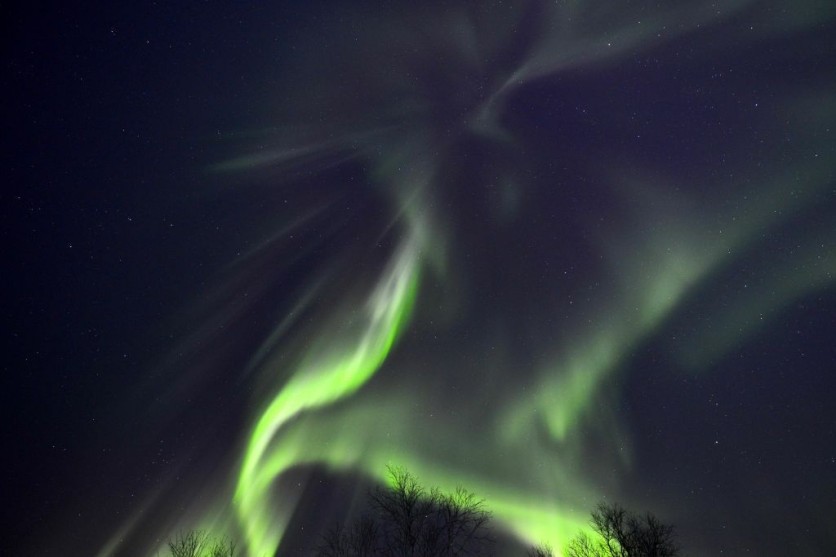
A probe shot amazing photos of Mars' nightside aurora as it studied the Martian atmosphere.
Nightside Aurora Spotted
According to a report by Futurism, the probe was sent by the United Arab Emirates in hopes of studying the Martian landscape. Everything was going as planned, until the unexpected phenomenon shocked the researchers and immediately took still photos to immortalize the event.
The nightside aurora is said to be notoriously hard to detect and let alone take pictures of.
However, as luck would have it, instruments of the scientific vessel were able to catch a glimmer of the aurora that was otherwise proven very difficult to study.
The images were released on Wednesday, June 30, that showed the auroras looking like a shape of bright dots pitted against Mars' dark sky. The discovery only happened by coincidence and was not even part of the science vessel's observation mission.
This discovery sets up the Emirates Mars Mission to possibly encounter more discoveries later this year.
Justin Deighan, a planetary scientist at the University of Colorado as well as the deputy science lead of the mission spoke to Space.com saying, "They're not easy to catch, and so that's why seeing them basically right away with [Emirates Mars Mission] was kind of exciting and unexpected."
He went on and said that the discovery was on their radar but actually being able to witness it for the first time was "a lot of fun."
Auroras on Earth and Mars
Auroras are the creation of the planet's magnetic field as charged particles get sent out into the atmosphere. They alter their own trajectories sporadically, causing the particles to then ionize and create light that we see in a myriad of colors as they mingle with each other.
The auroras on Mars, however, are different to Earth as it doesn't happen in just the north and south poles but appears on every part of the planet.
This happens as the magnetically charged atmosphere of the Red Planet isn't the same as the one located on Earth.
These three images of atomic oxygen emission at a wavelength of 103.4 nm from the planet Mars were obtained by the Emirates Mars Ultraviolet Spectrometer instrument on 22 April, 23 April, and 06 May 2021 respectively. pic.twitter.com/YDFOAOm4et
— Hope Mars Mission (@HopeMarsMission) June 30, 2021
Deighan came to explain it as if taking a bag full of magnets and sprinkling them over the planet, and all of the magnets are pointing in different directions with varying strengths. The scattered magnetic fields then cause the solar wind particles to blast off in different areas that interact with molecules and atoms in the upper atmosphere.
Emirates Mars Mission
The probe used its Ultraviolet Spectrometer to capture the reclusive phenomenon that was originally meant to study the gigantic halo of hydrogen and oxygen surrounding Mars.
The mixture of the two then dissipates towards the outer atmosphere.
Hessa Al Matroushi, the mission's leading figure, said that they didn't anticipate that the instrument could capture such a feat and went on saying that it wasn't designed for it.
However, the accidental mistake is an exciting one for the team as their mission was to capture different sides of the atmosphere of Mars.
The team is excited and hoping for new discoveries that could create newer doors for which they could study in terms of the Martian planet and how solar activity interacts with it regularly.
This article is owned by Tech Times
Written by Alec G.




